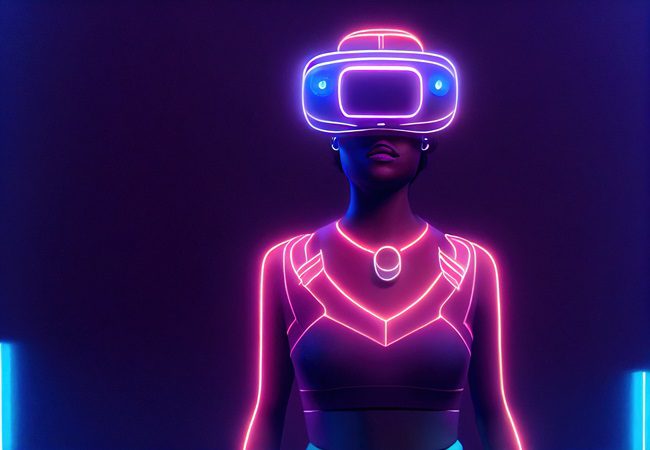Introduction:
Virtual Reality (VR), once confined to the realms of gaming and entertainment, has transcended its initial boundaries to become a transformative force in industries far beyond. One of the sectors experiencing a revolutionary impact is real estate and architecture. This article explores the profound role of virtual reality in reshaping how we design, visualize, and experience spaces, ushering in a new era of innovation and efficiency.
Immersive Property Tours:
In the realm of real estate, the traditional model of property viewing is undergoing a radical transformation with the integration of virtual reality. Prospective buyers can now take immersive virtual tours of properties from the comfort of their homes. This not only saves time but also broadens the reach of property listings, allowing potential buyers from around the world to explore a property in detail without the need for physical presence.
Visualizing Architectural Designs:
Architects are embracing virtual reality as a powerful tool for visualizing and presenting architectural designs. VR allows designers and clients to step into a digital representation of a project, experiencing the scale, proportions, and spatial relationships in a more tangible way. This immersive experience enhances communication and collaboration, ensuring that all stakeholders share a common vision before construction begins.
Streamlining the Design Process:
Virtual reality streamlines the design process in architecture by providing a dynamic platform for testing and refining ideas. Designers can manipulate elements in real-time within a virtual environment, allowing for instant feedback and adjustments. This iterative approach not only accelerates the design phase but also reduces the likelihood of costly changes during construction, ultimately saving time and resources.
Enhancing Stakeholder Collaboration:
Effective collaboration among stakeholders is crucial in the success of any real estate or architectural project. Virtual reality facilitates enhanced collaboration by providing a shared digital space where architects, developers, and clients can interact and provide input. This collaborative dimension ensures that everyone involved is on the same page, minimizing misunderstandings and streamlining decision-making processes.
Virtual Reality in Property Development:
In the realm of property development, virtual reality plays a pivotal role in showcasing proposed projects to potential investors and stakeholders. Developers can create immersive experiences that allow investors to explore the envisioned property or project before construction begins. This not only attracts investment but also instills confidence in the project’s vision, fostering support from key stakeholders.
The Impact on Architectural Education:
Virtual reality is not only transforming professional practices but also reshaping how architects are trained. Architectural education is leveraging VR to provide students with hands-on, immersive experiences in design and spatial understanding. Virtual reality simulations allow students to explore architectural concepts in a three-dimensional space, bridging the gap between theoretical knowledge and practical application.
Addressing Design Challenges:
Architectural design often involves overcoming complex challenges, such as optimizing space, ensuring accessibility, and maximizing natural light. Virtual reality enables architects to simulate these challenges within a digital environment, allowing for real-time problem-solving. By identifying and addressing design challenges early in the process, architects can create more functional and aesthetically pleasing spaces.
The Accessibility Factor:
One of the key advantages of virtual reality in real estate and architecture is its accessibility. Virtual reality experiences can be accessed through VR headsets or even through more common devices like smartphones and tablets. This accessibility ensures that a broader audience, including clients, investors, and the general public, can engage with and understand architectural designs and real estate offerings in a more immersive manner.
VR in Property Marketing:
Real estate marketing has evolved with the integration of virtual reality. Property listings that include virtual reality tours stand out in a crowded market, attracting more attention from potential buyers. This immersive marketing approach allows individuals to virtually walk through a property, experiencing its layout and features before scheduling a physical visit. The result is a more informed and engaged pool of potential buyers.
Overcoming Distance and Time Constraints:
For international buyers or those with limited time for physical property visits, virtual reality offers a compelling solution. The technology allows individuals to explore properties remotely, overcoming geographical distances and time zone differences. This is particularly advantageous in the global real estate market, where potential buyers may be located thousands of miles away from the properties they are interested in.
Future Trends:
VR and Augmented Reality (AR):
As technology continues to advance, the future of virtual reality in real estate and architecture holds exciting possibilities. Augmented Reality (AR), an extension of virtual reality, is gaining traction. AR overlays digital information onto the real-world environment, offering potential applications such as visualizing construction plans on-site or providing additional information about a property during a physical tour.
Challenges and Considerations:
While virtual reality brings numerous benefits to the realms of real estate and architecture, there are challenges to address. The cost of implementing VR technology, the need for specialized training, and potential resistance to change are factors that must be considered. However, as VR technology becomes more mainstream and user-friendly, these challenges are likely to diminish.
Conclusion:
Virtual reality’s role in real estate and architecture extends far beyond its origins in gaming and entertainment. It is a catalyst for innovation, efficiency, and a paradigm shift in how we design, visualize, and experience spaces. From immersive property tours to streamlined design processes, virtual reality is reshaping the way professionals and consumers engage with the built environment. As technology continues to evolve, the integration of virtual reality in real estate and architecture is poised to become not just a trend but a fundamental aspect of the industry’s future. The journey has begun, and the impact of virtual reality on these industries is both profound and promising.

































